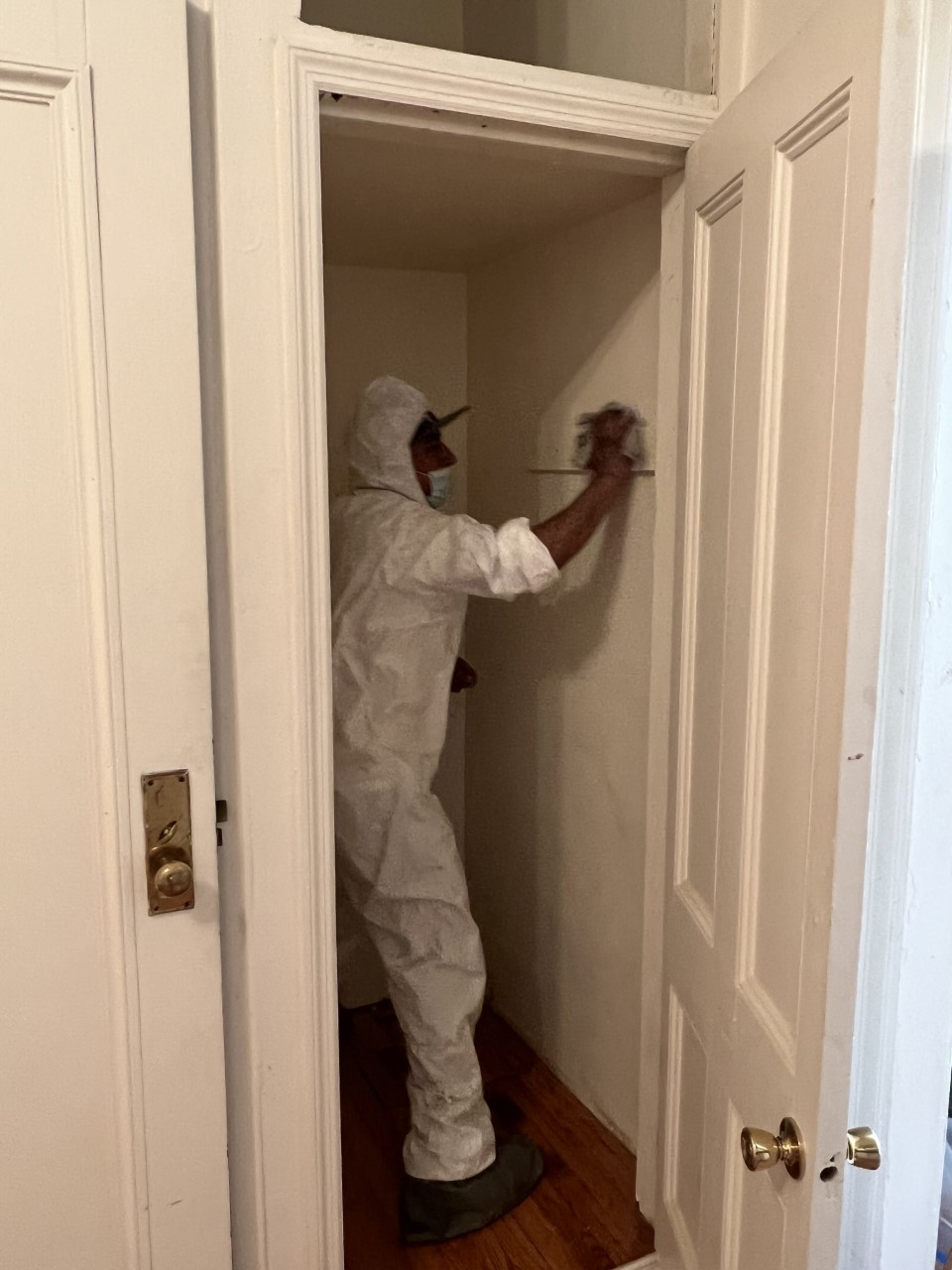NYC Lead Removal Contractors-- Get Safe and Efficient Providers
Wiki Article
Best Practices for Ensuring Safe and Complete Lead Infraction Reduction
Resolving lead offense reduction needs a multi-faceted technique to guarantee both safety and security and compliance. It's the final clearance process, including complete examinations and laboratory screening, that really validates a lead-free atmosphere, making sure long-term security. How do these methods adjoin to assure detailed lead reduction?
First Evaluation
Carrying out an initial analysis is a crucial very first step in lead infraction abatement. This stage includes an in-depth analysis of the home to determine the existence, level, and certain areas of lead-based dangers. Qualified specialists, such as qualified lead examiners or take the chance of assessors, need to perform a comprehensive website inspection, using tools like X-ray fluorescence (XRF) analyzers to properly spot and gauge lead concentrations in paint, dirt, soil, and water.The evaluation has to also include a review of the structure's background, previous reports, and any kind of problems or health and wellness issues reported by passengers - Lead Removal Contractors. Documenting the findings carefully is important, as these documents develop the basis for establishing an effective abatement approach. A complete assessment also involves sampling and research laboratory analysis, which are vital to validate the presence of lead and overview subsequent activities
Furthermore, it is critical to interact the results transparently to all stakeholders, consisting of residential or commercial property proprietors, renters, and regulatory authorities. By guaranteeing that the first assessment is conducted with precision and roughness, professionals can lay a solid structure for a targeted and effective lead reduction process, eventually securing public health and making certain conformity with governing standards.
Appropriate Control
Proper containment is critical to stop the spread of lead contaminants throughout abatement tasks. Properly taking care of control reduces the danger of lead dust and debris moving to non-work locations, therefore safeguarding both the environment and individuals outside the prompt work zone. To attain proper containment, a closed obstacle of plastic sheeting must be developed around the work location, making sure all seams and sides are securely secured. Lead Removal Contractors. This barrier should extend from flooring to ceiling and be taped to stop any type of leaks.
Normal examinations of the containment location are required to inspect for breaches or weaknesses in the obstacle. Any kind of determined issues need to be without delay addressed to maintain the honesty of the control. By sticking to these techniques, abatement projects can successfully control lead contamination and mitigate affiliated health and wellness threats.
Worker Defense
Guaranteeing employee protection is paramount during lead reduction tasks to protect against occupational direct exposure to harmful lead particles. Necessary actions consist of using individual safety devices (PPE) such as respirators, handwear covers, and full-body fits especially designed to obstruct lead dust and fumes. Workers should undergo extensive training on the appropriate usage and upkeep of PPE, consisting of healthy testing for respirators to ensure optimum efficacy.Design controls, such as local exhaust air flow systems, are essential in minimizing airborne lead concentrations in the workplace. Administrative controls must additionally be applied, consisting of limiting the duration of direct exposure and rotating employees to lower individual exposure times. Regular medical monitoring and organic monitoring are essential for very early detection of lead absorption, making it possible for prompt treatment and treatment.
Additionally, establishing a decontamination protocol is important. Employees need to adhere to strict purification treatments prior to breaks and at the end of their change to protect against lead dust from being lugged outside the work area. This consists of thorough hand and face washing with lead-specific cleaner and changing out of contaminated apparel.
Precise Clean-up
Preserving a safe work environment extends past employee defense and includes careful cleanup to guarantee lead fragments are extensively eliminated from the website. The process of careful cleaning is crucial in protecting against the recontamination of the eased off area and guarding both existing and future passengers.To achieve a thorough cleanup, all job locations have to be methodically decontaminated. This includes using specialized HEPA (High-Efficiency Particulate Air) vacuum and wet-wiping techniques to capture and remove great lead dirt that might have settled on surface areas. It is critical to clean all straight surfaces, including floors, home window sills, and countertops, in addition to vertical surface areas that may have entraped lead particles.
Employees need to put on proper personal safety devices (PPE) throughout cleanup to prevent exposure to residual lead dust. Made use of cleaning products such as wipes, sponges, and wipe heads need to be thrown away in accordance with contaminated materials disposal guidelines.

Last Clearance
Last clearance is the important ending stage of lead abatement that figures out whether the site is secure for reoccupation. This essential step entails thorough assessment and screening to verify that all lead dangers have actually been properly eliminated. The procedure begins with a visual inspection by a qualified lead-based paint examiner or risk assessor to make sure no noticeable dirt or particles continues to be. This is adhered to by gathering dust clean examples from various surfaces, consisting of floors, windowsills, and other straight surfaces. Lead Removal Contractors.
Last clearance screening not only shields future occupants yet additionally ensures compliance with regional, state, and federal regulations. Additionally, it offers as a recorded recognition of the reduction contractor's adherence to market finest techniques. Making sure a detailed and successful last clearance is crucial in securing public health and promoting count on the abatement procedure.
Final Thought
Making sure risk-free and complete lead infraction reduction necessitates a complex method including first analyses with innovative detection techniques, effective containment approaches, rigorous employee defense protocols, and thorough clean-up procedures. The last clearance phase, including in-depth evaluations and lab screening, is critical to validate compliance with EPA standards. Adherence to these best practices assures a safe environment for occupants, mitigates health and wellness dangers, and promotes regulative demands, thus advertising public health and safety and security in lead-affected locations.Report this wiki page